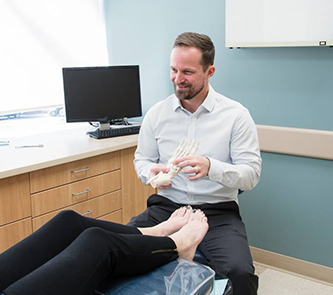A Winning Game Plan: Don’t Ignore Signs of a Foot Fracture on the Field
It’s important to recognize the symptoms of foot fractures and not to ignore their signs. The injury won’t get better on its own and could get worse if you continue to put weight on your foot or ignore your injury. This is particularly true if you have an open fracture in which the skin of your foot is broken since this could lead to an infection. In some cases, your injury may heal but if the bones don’t align properly, you’ll have limited mobility in your foot. If this happens, surgery will need to be performed.
In addition, fractures that extend into a joint can cause arthritis years after the injury. Adjacent nerves and blood vessels can also be damaged or torn, so if you notice any numbness, you should seek immediate medical attention. A lack of blood flow to a bone can cause it to die and collapse.
Causes of foot fractures
Foot fractures can be caused in many ways, including the following:
- Direct blows, twisting, and stresses that occur in sports like football, basketball, soccer, tennis, and gymnastics
- Improper training technique or equipment when playing sports
- Car accidents
- Trips, falls, and missteps
- Dropping something heavy on your foot
- Direct impact of the foot on a hard object
- Overuse
- Weakening due to a condition like osteoporosis
Symptoms of feet and toe fractures
If you have any of the following symptoms, you may have a fracture in your foot or toes and should see a doctor:
- Immediate, throbbing pain in your foot or toe
- Swelling
- Pain that worsens with activity
- Difficulty walking, standing, or putting weight on your foot
- Numbness and circulation problems in your foot
- Your foot is deformed and looks like it’s in an unnatural position
- Tenderness
Diagnosing a foot fracture
Your doctor will usually order X-rays to confirm or rule out a diagnosis of a broken foot. In some cases, additional imaging such as computed tomography (CT) or magnetic resonance imaging (MRI) is also needed.
Treatment
Treatment for a foot fracture depends on the type of fracture as well as on the specific bone that’s been fractured. It may include the following:
- Wearing a splint or specially designed boot with open toes, Velcro fasteners, and a rigid sole
- Refraining from putting weight on your foot for a specific period of time (up to several weeks)
- Physical therapy to improve movement and flexibility and to strengthen supporting muscles
Getting a proper diagnosis and treatment are keys to having feet and toe fractures heal properly and as quickly as possible. If you think you may have fractured your foot or toe, seek medical care and avoid putting weight on it. Your doctor can properly diagnose your injury and devise a plan of care to help get you comfortably back on your feet again.
Pay Your Bill
Make a payment online through our payment portal or Care Credit!
Portsmouth Office
14 Manchester Square, Suite 250
Portsmouth, NH 03801
Nashua Office
17 Riverside Street, Suite 205
Nashua, NH 03062
Website Hosted by SC Digital




